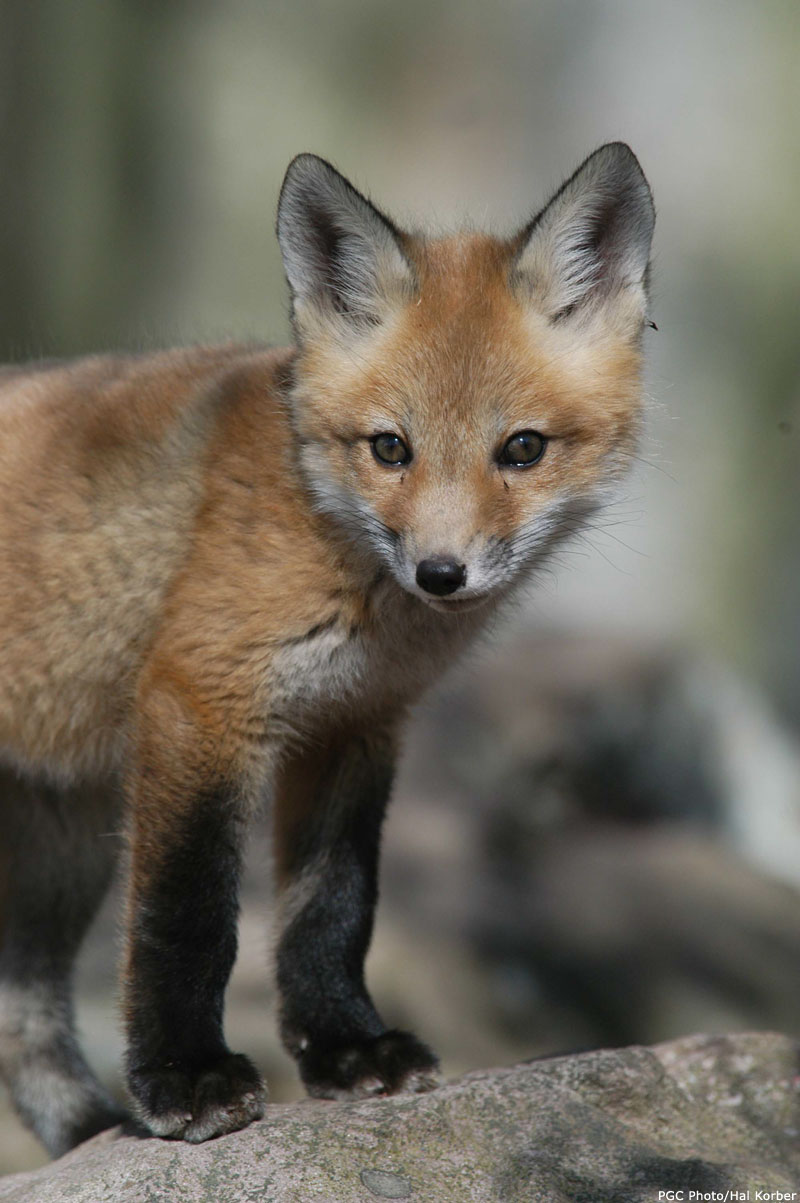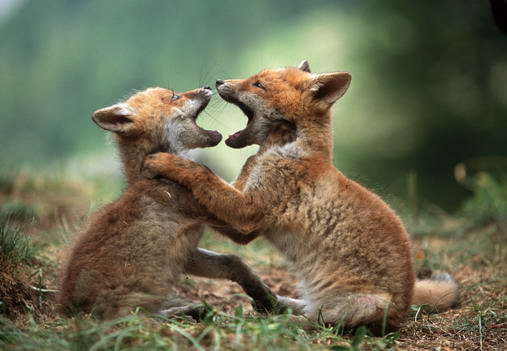  CLASSIFICATION
Kingdom: Animalia
Phylum: Chordata
Class: Mammalia
Order:
Carnivora
Family: Canidae
Genus
species: Vulpes Vulpes
Fish Photo
Caption
GENERAL
INFO
Usually colored from yellowish red to deep reddish brown
on its dorsal side and usually white, ashy, or gray on the ventral side.
Lower part of legs are usually black and tip of tail is either white or
black. Mature foxes have yellow eyes. They are vertebrate deuterostomes
and have eucoeloms. Endothermic.
SPECIAL FEATURES
HABITAT
They utilize a wide
variety of habitats including forest, tundra, prairie, and farmland.
Prefer habitats with a diversity of vegetation types and are increasingly
encountered in suburban areas. Found throughout Canada, Alaska, and almost
all of the United States, all of Europe and Britain, and almost all of
Asia.
DIET
Red Foxes are omnivores
and will eat anything they can get a hold of. They eat any kind of meat
that they can find dead or alive and fruit. Will find as much food as they
can and if they have extra food they will store it in a safe spot that
they can remember easily. They eat between .5 and 1 kg each day.
REPRODUCTION
Males fight during the
breeding season to attract females. Just before and a little time after
giving birth the female remains in or around the den. The male will
provision its mate with food but will not enter the maternity den. Litters
vary in size from one to thirteen pups with an average of five. The pups
are born blind but open their eyes 9 to 14 days after birth. Pups leave
the den four to five weeks after birth and are fully weaned by 8 to 10
weeks. Mother and pups remain together until the autumn after birth.
BODY
SYSTEMS
Circulatory-four chambered, two loop, closed circulatory system.
Excretory-Kidneys
Reproductive-two separate sexes, internal fertilization, direct
development.
Nervous-Has a large brain at anterior end of body. Has extraordinary
sense of smell and sound.
HUMAN
IMPACT
Sometimes harmful to humans. They dig their dens in
fields were cows live and the cows will step into the holes and break
their legs which will kill them eventually because of hunger. Foxes will
also attack small dogs and other animals. Sometimes beneficial to humans
because they keep the number of their prey animals down. Humans are main
threats because we hunt them for their furs and to protect their
livestock.
WEBLINKS
SOURCES
http://www.pgc.state.pa.us/pgc/lib/pgc/wildlife/photolib/red_fox_pup.jpg
http://www.stefanounterthiner.com/images/Grandi/Red%20Fox%20013%20POSTER.jpg
http://www.ljplus.ru/img2/pycaky/Chasing-A-Snack-Red-Fox.jpg
http://www.nhptv.org/natureworks/redfox.htm
http://animaldiversity.ummz.umich.edu/site/accounts/information/Vulpes_vulpes.html
| 
